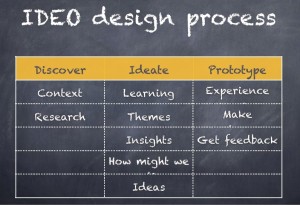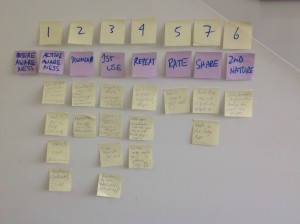We are middle of the way through reviewing Chip and Dan Heath’s excellent book Decisive. To review previous posts check out Part 1 and Part 2. This section is about short-term emotions and how they can get very much in the way of making a good decision, which is especially perplexing when you have made significant effort to overcome self-confidence.
This next villain, short term emotion is an important one for product managers to think about as we are always introducing new things to an organisation. Short term emotion or loss aversion lead to strong bias against change. So even if you personally have managed to overcome your own bias against change, others are going to express their resistance strongly, and having some tips to work through it will help you be an effective leader of change.
One of the ideas the Heather brothers suggested here is to introduce familiarity, or as they more eloquently put it make use of the exposure principle. By introducing concepts gradually it can help overcome strong emotional responses. One of our group shared an experience, where they kept printed copies of all the pieces they were working on stuck up on their cubicle wall so that everyone could see what they were busy with at any time. This meant that by the time more formal presentations occurred, there were no surprises and thus less resistance to what was new.
The example in the book called out that the approach to breeding familiarity can take many different courses. In this case, new words were shared with students by chalking them up on the lecture board each day. When the students were introduced to a new author to read, they felt they already knew who this person was, as the author’s name was one of the words that had been on the chalkboard each day (familiarisation done over a period of a few weeks). That might seem an odd approach but the key is that it doesn’t matter where the familiarity comes from, it helps with the acceptance of the book and author anyway. This particular tool resonated for many in the group, when we discussed it at our Product Anonymous session, and people could see some new possibilities for improving on their previous efforts at introducing the new.
So you have overcome confirmation bias thus far and those ugly Short-term emotions cloud your judgement, so some of the ways to help Attain distance before deciding (or as I like to call it “Phone-a-Friend”) are listed below:
- sleep on it
- what would you tell your best friend to do?
- Exposure principle + loss aversion leads to a powerful bias against change
- 10/10/10 rule: how would you feel about this decision in 10 minutes, 10 months or 10 years
- short-term emotion may distract you from long term aspiration
- core priorities (I hear vision in this tool, what is the product and its purpose)
- the what will I stop doing in order to DO the things I said I will now do
Just in case you haven’t been convinced to own it for yourself because I cannot cover everything, the book can be purchased here: Decisive: How to Make Better Choices in Life and Work by the Heath brothers.
The next blog post will be about the last bias of them all Over confidence and how to Prepare to be Wrong.


